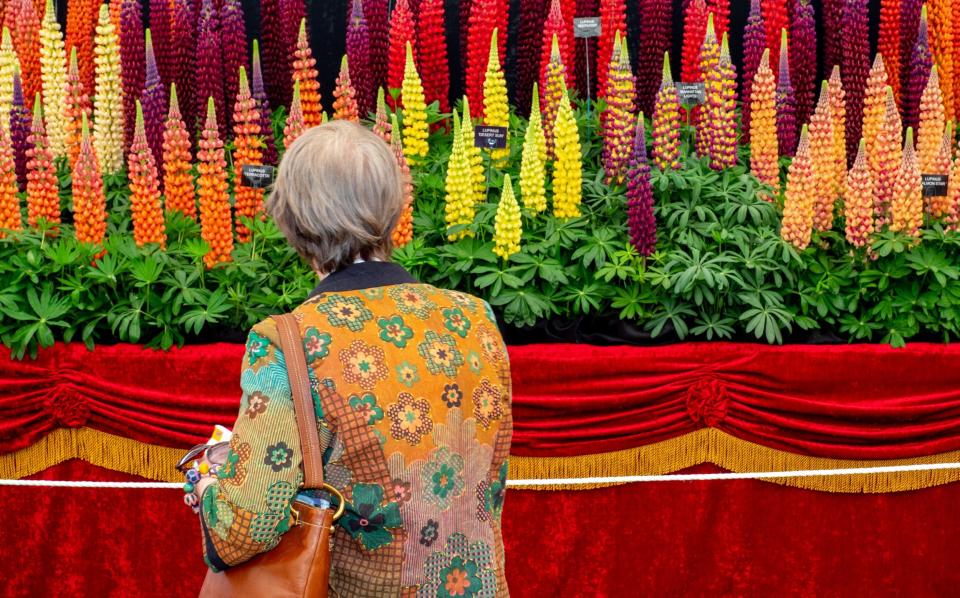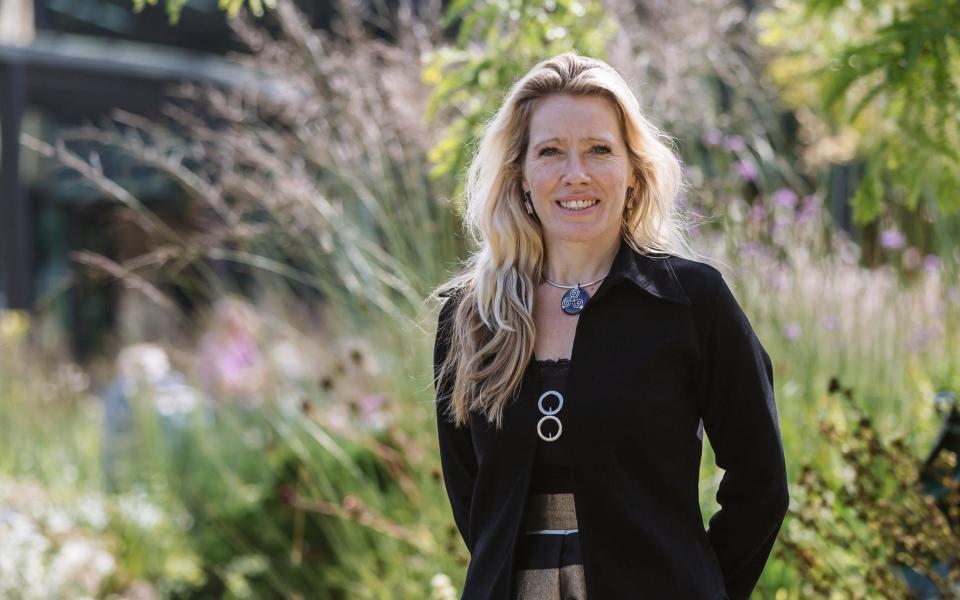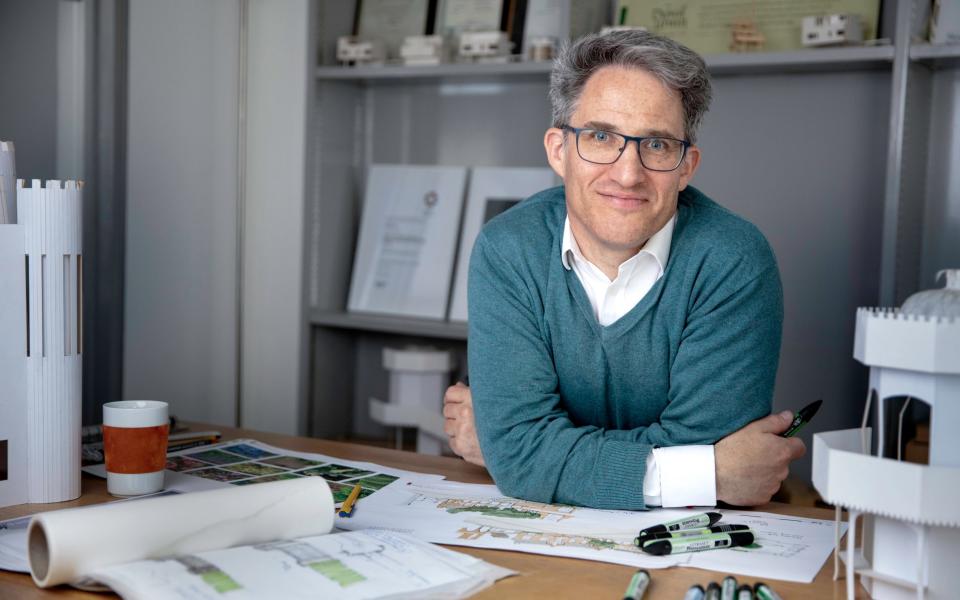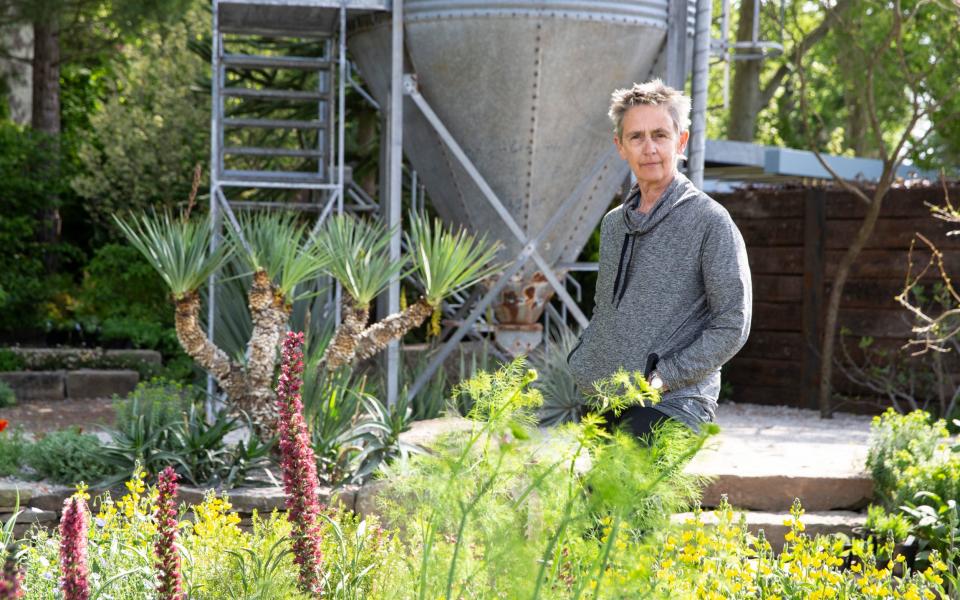What to expect at the RHS Chelsea Flower Show 2021: exhibitor reactions and all the displays

It’s late September, and it’s the RHS Chelsea Flower Show. How strange! But also — how wonderful. The new show date presents a great opportunity to celebrate gardening’s ‘fifth season’ — the period from late summer into autumn when all those trendy ‘naturalistic’ plants such as grasses and tall or daisy-flowered perennials come into their own.
At least, you would have thought so. When the decision was made, at the beginning of the year, to postpone the May show to September (for the first time in Chelsea’s 108-year history), it caused consternation among nurseries and some designers, dismayed at the prospect of selecting and growing a completely new palette of plants.
At the time RHS director-general Sue Biggs opined, ‘We believe many designers and nurseries will look forward to working with different plants that would not be available or at their best in May.’
Sounds reasonable enough, perhaps, but ‘Good luck with that one!’ would have been an equally reasonable response, because it would be fair to say that it took some time for this noble sentiment to become a reality.
Several designers and sponsors immediately withdrew their show gardens (there are just six main show gardens this year, down from 11 in 2019 and the lowest number ever) while several regular exhibitors — including the Alpine Garden Society and nurseries who specialise in lilies, lupins and other plants for earlier in the season — also announced they would not attend.
Just a few months ago, one RHS Council member confided in me that ‘everyone is very nervous’ about the prospect of the new September show date.

But people have adapted, as has been necessary over the past 18 months, and now there is a palpably positive air around the prospect of holding the Chelsea show in this season of mists and competitive fruitfulness.
According to Helena Pettit, RHS shows director, ‘The intial reaction, when we first said we would postpone to September, was that people panicked and said it won’t work.’
But she estimates that the showground currently stands at between 65 per cent and 80 per cent strength across its various areas, with trade-stands (furniture, accessories and so on) almost at the level they would be normally, with show-gardens and nurseries somewhat down, at about 70 per cent.
‘There are some nurseries who wouldn’t come,’ Pettit says, ‘but then others have been able to bring different stock. Some people have come in really last minute, and we also have some new exhibitors.’ Among the unusual sights at Chelsea this year are displays of grasses, dahlias and late-flowering salvias and penstemons in their pomp, as well as topiary (this last in response to a recent boom in interest).
An ‘Italian piazza’ feature will dominate the centre of the Great Pavilion, with colourful squashes, gourds and other veg celebrating the autumn harvest.

One reason for a late decision among nurseries is, inevitably, related to the pandemic. Over the summer, testing regimes and the ‘pingdemic’ created a knife-edge situation for many small nurseries at Hampton Court and other shows. Many said they did not want to go through that experience again. But for this show, exhibitors are only required to submit a lateral-flow test once every three days — which has emboldened more of them to attend.
As for visitors, Pettit says they will notice that there is more space at the showground overall. ‘We haven’t put up as many fixed structures for catering and so on,’ she explains, adding that there is more of a ‘street-food’ element. ‘We have more space around the gardens,’ she continues. ‘Generally there are three sides open to the garden, to give people more space.’
Perhaps the most noticeable change is the decision to spread the show across six days as opposed to five (there are no plans to continue this for 2022), and to reduce overall ticket numbers from 168,000 to 142,000 (Pettit says that fewer visitors is likely to become the norm). As a result there is a good chance that this will be the most enjoyable Chelsea ever for many visitors — partly because it is less crowded, partly because of the sheer joy of being back at the show.
Designers’ challenge

As for the show gardens, various changes — beyond the obvious choice of seasonal plant material — have come into focus over the past month. The showground has been quieter, with fewer lorries coming and going, which has made the experience of build-up less frenetic (and safer) for designers and their teams.
The usual Chelsea late-night working has been curtailed, as the sun sets so much earlier, which has also led to a necessary emphasis on lighting in the gardens and in the showground generally. And the notorious plane-tree pollen — cause of ‘Chelsea cough’ for crews — is not an issue this year.
For designers and nurseries, it is of course the plants which have presented the greatest challenge. Trees, hedges and larger shrubs have been particularly difficult, since in a normal year so many are imported from nurseries in Germany, the Netherlands and Italy.
There have been problems sourcing plants within the UK, too, which some believe to be the result of stock being scooped up by an estimated 3 million new gardeners who have emerged during the pandemic.

As designer Arit Anderson reports: ‘One of my most experienced suppliers told me, “You can go one of two ways: you can either make a long list and risk being disappointed, or you can hold your nerve and wait to see what is available.”’
Anderson has followed the latter course, while Robert Myers adapted his plans earlier on. ‘Basically we have torn it up and started again,’ he says. ‘We hadn’t actually grown anything at cancellation date so we were able to do that.’
There are upsides, too, he says. ‘We’ve been doing Chelsea all these years [this will be Myers’s seventh main-avenue garden] and it’s difficult to be wildly original because there are a limited number of plants which are reliable in May. We are enjoying the fact we can use grasses like pennisetums and so on, with the seedheads, and things like echinaceae, and even some dahlias.’
It hasn’t helped that this has been ‘a very weird weather year’, to borrow Helena Pettit’s phrase. ‘We did not bank on a cold August,’ explains Anderson, referring to the rather on/off summer experienced in most of Britain.
‘Things either bolted away too fast during that July heat period, or they were stopped in their tracks in August. I had some selinums that I was growing, as the perfect autumn umbellifer [cow parsley]. But they’re just not ready. They have halted. We’ll still use them, for the leaf, but there is no flower. ’

Sarah Eberle agrees that, ‘the plants have been the biggest stress for designers and nurseries — they’ve never had to produce show-quality plants before in September. People didn’t know whether to give them “the Chelsea chop”, to let them grow, or to slow them down.’
Charlotte Harris and Hugo Bugg, hot favourites to win ‘best in show’ on main avenue, claim to have been more or less impervious to the change in show date. ‘We have been able to keep 80 per cent of our palette,’ Bugg says. ‘We always aim for full seasonality because we want to relocate our gardens after the show. We don’t want it to be a floral display for just that one week.’
Harris adds: ’We always wanted to make a garden with a past, present and future. So things like Actaea simplex and Hydrangea quercifolia were in there from the start. Those lovely woodland ephemerals are great in May but something like Aruncus dioicus ‘Horatio’ is incredible now — the leaves have gone coral and the plumes are beautifully biscuity.’
Nevertheless most designers are experiencing some unfamiliar sensations — longer shadows, moistness in the air, a softer quality of light, plants behaving differently. ‘Normally at Chelsea you are worried about flowers going over,’ says Bugg, ‘but at this time of year it’s more about the leaves falling off.’
Roll on 2022
There is good news for the future of Chelsea, after a decline in the numbers of sponsored show gardens. According to Helena Pettit, RHS shows director: ‘We have an awful lot [of show gardens] coming in for next year.
Some have been held over from this year as they couldn’t change their palette. But we’ve had a lot more new applications. I can almost guarantee a very large number of show gardens — more than 20 — for 2022.’

